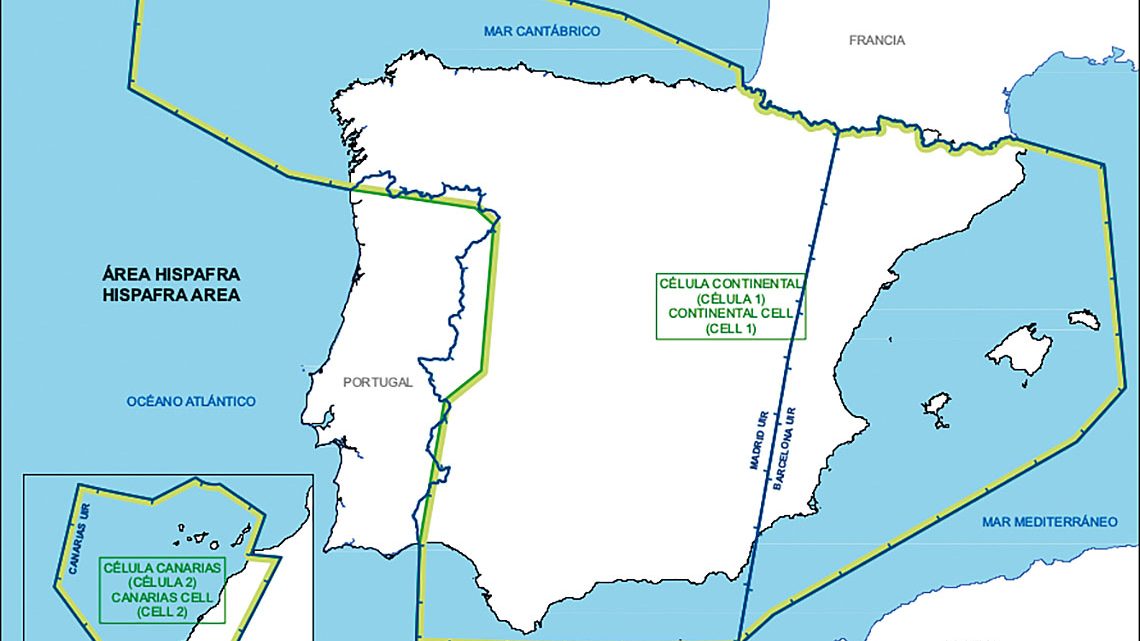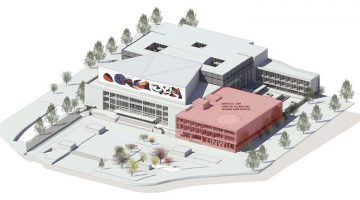The HISPAFRA project aims to implement the concept of free route airspace (FRA) within Spain. At the European level, the FRA initiative is promoted and coordinated by Eurocontrol, in accordance with the stipulations of Commission Implementing Regulation (EU) 2021/116 of 1 February 2021. It is a nationwide project in which Ineco is supporting the ENAIRE Director of Operations and helping to coordinate all of the bodies involved, which include the General Directorate of Civil Aviation, the National Air Safety Agency, the Spanish Air Force and ENAIRE.
Until now, airlines and airspace users have defined their flight plans using a network of waypoints and segments published in aeronautical charts. The pre-pandemic growth in air traffic across Europe has meant that this network of segments and flight paths has become more expansive and complex. In turn, this has made it possible to manage air traffic within the capacity of the network without impacting negatively on safety.
Free route airspace is a concept in which airspace users are able to draw up flight plans in line with their companies’ interests, and freely establish connections between waypoints within a particular volume of airspace without reference to the existing published routes. However, they must still adhere to certain rules with regard to connectivity between the waypoints in question. The concept can be compared to the experience of a driver at a junction with traffic lights and a junction with a roundabout: while the traffic lights oblige the driver to stop completely, at the roundabout the traffic flows more freely and the driver can choose where to exit, in accordance with certain pre-defined rules. Although the FRA concept does not imply the absence of rules, it does allow for greater dispersal of air traffic in comparison to structured airspace (thereby reducing “traffic jams”) and offers users greater flexibility when planning the optimum route between waypoints within the airspace. In turn, this enables them to plan flights that are more efficient, flexible and environmentally sustainable.
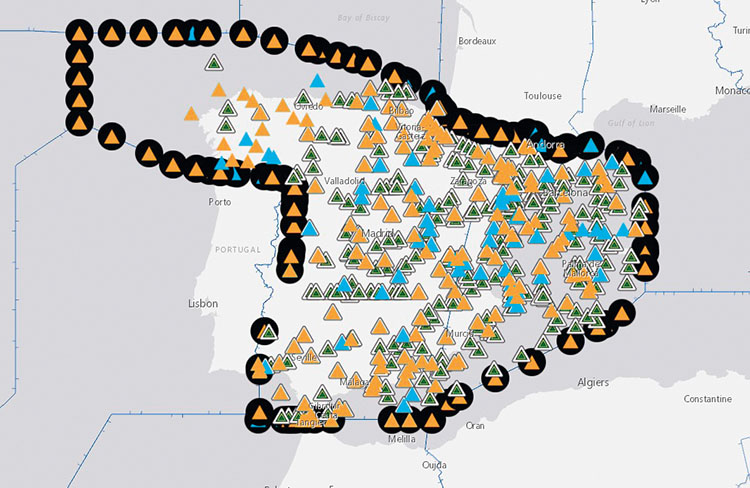
Entry, exit and intermediate points in free route airspace. MAP_ENAIRE
However, the increased flexibility in flight planning offered by the FRA concept results in greater dispersal of flight routes and increased uncertainty as to where conflicts that require controllers to separate the aircraft may occur. For this reason, and when dealing with complex airspaces, the FRA concept explored by the SESAR (Single European Sky ATM Research) initiative recommends that user defined segments should be based on published waypoints in high complexity airspaces (although the routes free route segments themselves do not need to be published) and controllers should be supported with advanced conflict-detection tools, as the aircraft’s whereabouts are no longer as predictable as they would be in structured airspace.
The FRA concept only applies during the flight plan stage, i.e. before the plane has left the ground. Once the flight plan has been submitted and approved, the flight becomes subject to that plan and to authorisation from air traffic control (ATC), which will continue to ensure that the aircraft remain separated from each other (as it does at present).
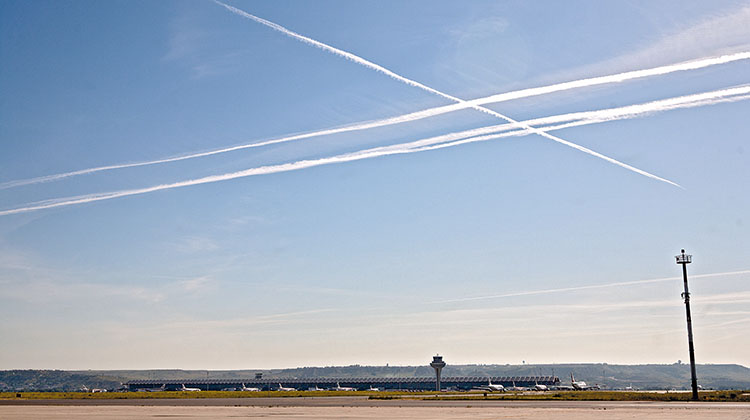
The HISPAFRA project aims to implement the concept of free route airspace (FRA) within Spain. At the European level, the FRA initiative is promoted and coordinated by EUROCONTROL. / PHOTO_INECO
the phases of hispafra
The implementation of HISPAFRA has been divided into different phases: in each phase the restrictions become more flexible and new functionalities are incorporated into the control system, while maintaining appropriate levels of capacity and safety. The European regulations stipulate that the initial phase must be implemented before 31 December 2022 and the final stage by December 2025, along with a cross-border element involving at least one other Member State. After this date, rollout of the FRA concept will continue and there will be greater cross-border implementation between Member States, thereby enabling a more flexible European airspace and more efficient planning on the part of airlines.
For phase 1 of HISPAFRA, two FRA cells have been defined: the continental cell, comprising the Iberian Peninsula and the Balearic Islands; and the Canary Islands cell. These cells will enter into force on 21 April 2022.
Existing published routes will not be eliminated during this initial phase; rather, airspace users will have the additional option of drawing up FRA plans that make use of these existing routes. This will enable the transition towards a free route approach for all, without changing the way in which ATC operates and with the aim of maintaining the same levels of capacity and safety, while enabling users to gradually adapt their systems in preparation for the subsequent phases.
Looking ahead to these subsequent phases, in which free connection between a greater number of waypoints will gradually become more flexible, ENAIRE is developing and deploying a series of new functionalities for its ATC system. These functionalities enable controllers to determine, ahead of time and with increased precision, whether a particular flight level or direct route presents an air traffic risk, prior to granting ATC clearance for separation provision. Examples of the tools available include Medium-Term Conflict Detection (MTCD) and Tactical Trajectory Management (TTM).
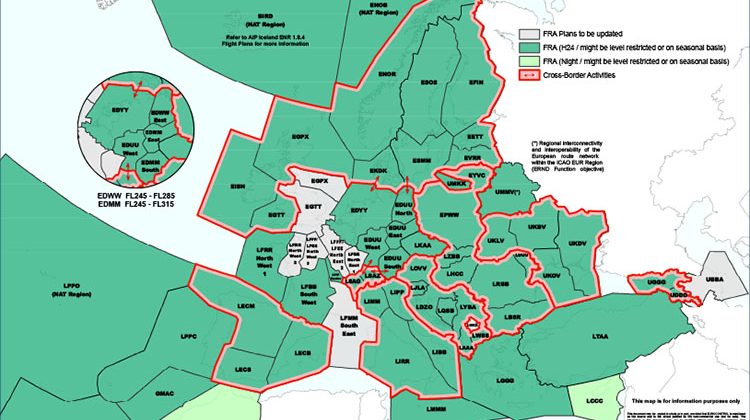
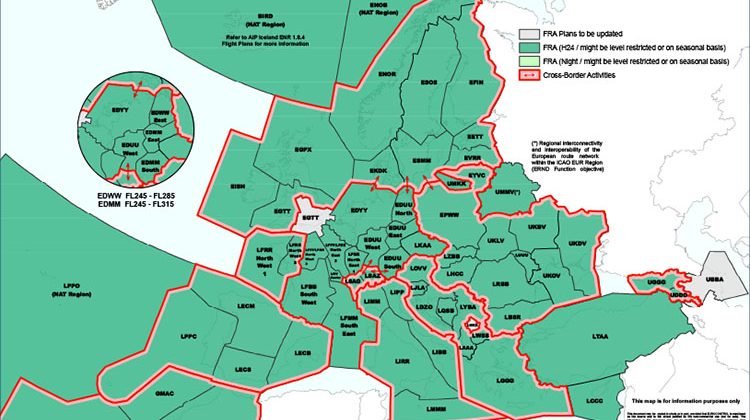
more flexible planning
Collaboration has also begun on the study process for the subsequent phases of the HISPAFRA project. While still allowing airlines to prepare flight plans in structured airspace or FRA, and without making changes to the ATC system, the aim is to make the connection between certain FRA waypoints more flexible (whether within the same control centre or between different control centres) in comparison to existing structured routes, thereby gradually expanding the range of planning options available to users.
Over time, HISPAFRA will introduce more flexible planning options, while making changes to the ATC system in order to be able to detect conflicts. This will allow users greater flexibility, while maintaining appropriate levels of capacity and safety.
Although the FRA concept does not imply the absence of rules, it does allow for greater dispersal of air traffic in comparison to structured airspace, thereby reducing “traffic jams”
Finally, the project will introduce the possibility of eliminating restrictions with at least one neighbouring state (so-called ‘cross-border FRA’), thereby enabling users to plan flights between different Member States as though they shared a single airspace. To achieve this, the ATC system for each Member State must have interoperability functionalities, adapted in line with the FRA concept.
Airspace is changing, and Ineco is at the forefront of these changes with a team of experts that are helping to define the FRA significant points, the FRA concept of operations, the ATC system requirements, and the implications these developments may have for the ATC procedures to keep safety at sustainable levels within the context of the increasingly air traffic demand.
Free route: a more sustainable European sky
Establishing a free route airspace offers a range of environmental, economic and operational benefits: according to EUROCONTROL, the implementation of free route operation throughout all of Europe would result in a saving of some 500,000 air miles, 3,000 tonnes of fuel and 10,000 tonnes of carbon dioxide per day, which would equate to monetary savings of around 3 million euros per day. It would also bring other benefits such as more stable routes, spatial dispersal of conflicts and a reduction in the workload of air traffic controllers thanks to a more flexible network.
Supported by Ineco

PHOTO_PIQSELS.COM
Since 2019, the company has helped ENAIRE to implement HISPAFRA by carrying out a range of actions:
- Publication of FRA information via AIP (Aeronautical Information Publication), in accordance with the implementation guides provided in EUROCONTROL’s ERNIP (European Route Network Improvement Plan) and in coordination with all of the actors affected by the change.
- Collaboration with ENAIRE’s Director of Operations on the development of tools for the automated transition (during this initial phase, owing to the large volume of data for the current structure) towards the definition of HISPAFRA points (in AIP Spain) and the rules governing the restrictions on flexible connection to these points, via direct entry in the Route Availability Document (RAD).
- Support for the changes introduced by the reviewers and the discoveries made during the pre-validation processes carried out on EUROCONTROL’s systems, prior to the implementation of HISPAFRA.
- Support for the maintenance and updating of the operational concept for HISPAFRA, and attending (and preparing materials for) internal and external coordination meetings.
- Support for coordination with the ATC centres of neighbouring Member States, so that the internal operational documentation for ATC is in line with the operational concept for HISPAFRA.


